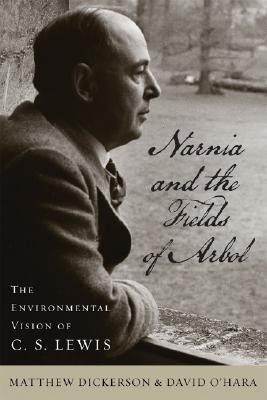| Narnia and the Fields of Arbol: The Environmental Vision of C. S. Lewis Contributor(s): Dickerson, Matthew T. (Author), O'Hara, David (Author) |
|
 |
ISBN: 0813125227 ISBN-13: 9780813125220 Publisher: University Press of Kentucky OUR PRICE: $33.25 Product Type: Hardcover - Other Formats Published: December 2008 Annotation: Scholars have discussed the work of C. S. Lewis (1898-1963) for decades, but they have focused on Lewis's Christian and pagan allusions and have largely ignored his other important themes. "Narnia and the Fields of Arbol: The Environmental Vision of C. S. Lewis "is the first book dedicated to Lewis's vision of our relationship to nature and the environment. Matthew T. Dickerson and David O'Hara examine "The Chronicles of Narnia" and the Ransom books, as well as "The Great Divorce,"" The Abolition of Man," ""and Lewis's essays and personal correspondence, connecting his writing with that of authors more traditionally associated with environmentalism, such as Wendell Berry, Aldo Leopold, and Gary Snyder. "Narnia and the Fields of Arbol "offers a fresh way for readers across disciplines to understand the work of this literary legend. |
| Additional Information |
| BISAC Categories: - Nature | Ecology - Literary Criticism | Science Fiction & Fantasy - Nature | Animals - General |
| Dewey: 823.912 |
| LCCN: 2008039350 |
| Series: Culture of the Land: A Series in the New Agrarianism (Hardcover) |
| Physical Information: 1.2" H x 6" W x 9" (1.27 lbs) 320 pages |
| Descriptions, Reviews, Etc. |
| Publisher Description: The remarkable breadth of C. S. Lewis's (1898--1963) work is nearly as legendary as the fantastical tales he so inventively crafted. A variety of themes emerge in his literary output, which spans the genres of nonfiction, fantasy, science fiction, and children's literature, but much of the scholarship examining his work focuses on religion or philosophy. Overshadowed are Lewis's views on nature and his concern for environmental stewardship, which are present in most of his work. In Narnia and the Fields of Arbol: The Environmental Vision of C. S. Lewis, authors Matthew Dickerson and David O'Hara illuminate this important yet overlooked aspect of the author's visionary work. Dickerson and O'Hara go beyond traditional theological discussions of Lewis's writing to investigate themes of sustainability, stewardship of natural resources, and humanity's relationship to wilderness. The authors examine the environmental and ecological underpinnings of Lewis's work by exploring his best-known works of fantasy, including the seven books of the Chronicles of Narnia and the three novels collectively referred to as the Space Trilogy. Taken together, these works reveal Lewis's enduring environmental concerns, and Dickerson and O'Hara offer a new understanding of his pioneering style of fiction. An avid outdoorsman, Lewis deftly combined an active imagination with a deep appreciation for the natural world. Narnia and the Fields of Arbol, the first book-length work on the subject, explores the marriage of Lewis's environmental passion with his skill as a novelist and finds the author's legacy to have as much in common with the agrarian environmentalism of Wendell Berry as it does with the fantasy of J. R. R. Tolkien. In an era of increasing concern about deforestation, climate change, and other environmental issues, Lewis's work remains as pertinent as ever. The widespread adaption of his work in film lends credence to the author's staying power as an influential voice in both fantastical fiction and environmental literature. With Narnia and the Fields of Arbol, Dickerson and O'Hara have written a timely work of scholarship that offers a fresh perspective on one of the most celebrated authors in literary history. |